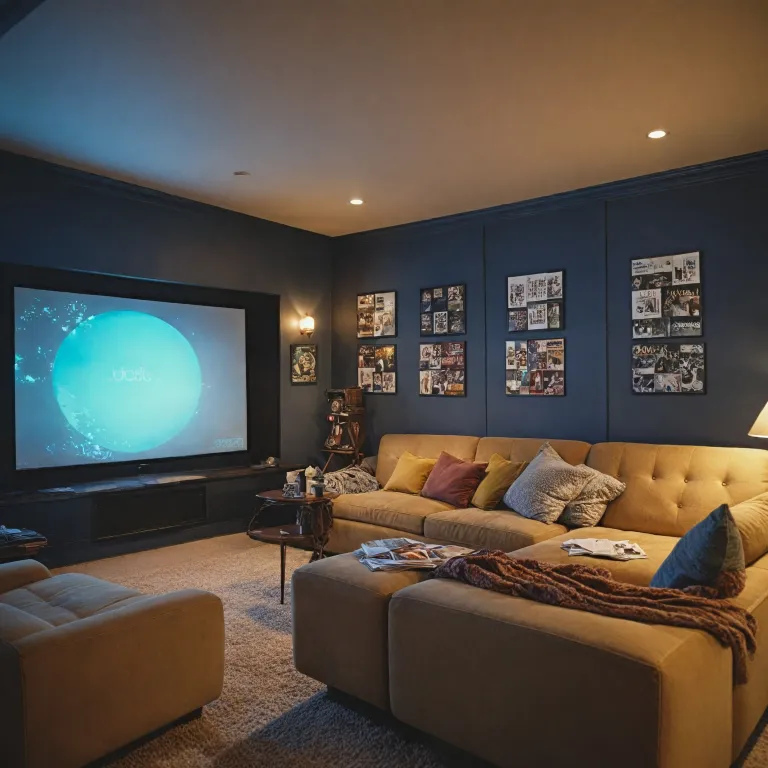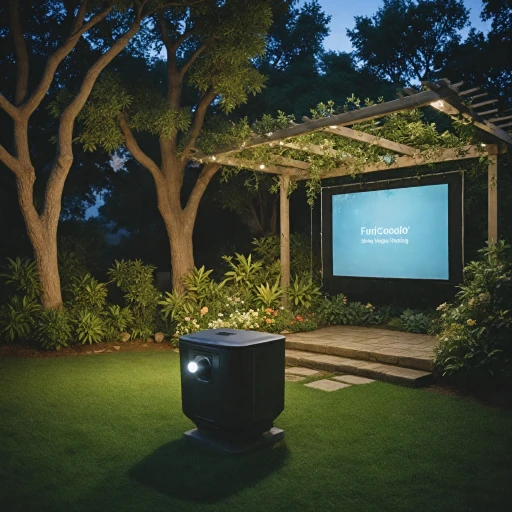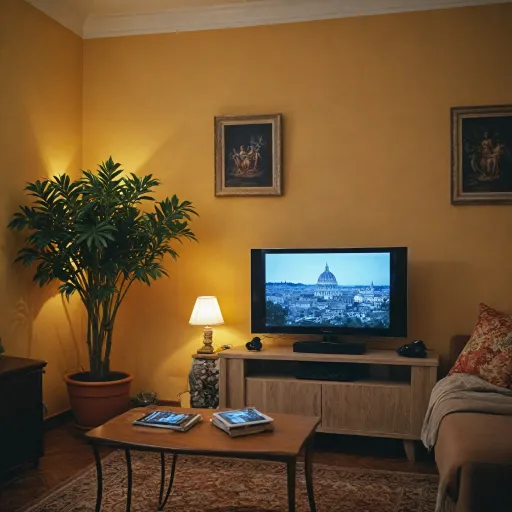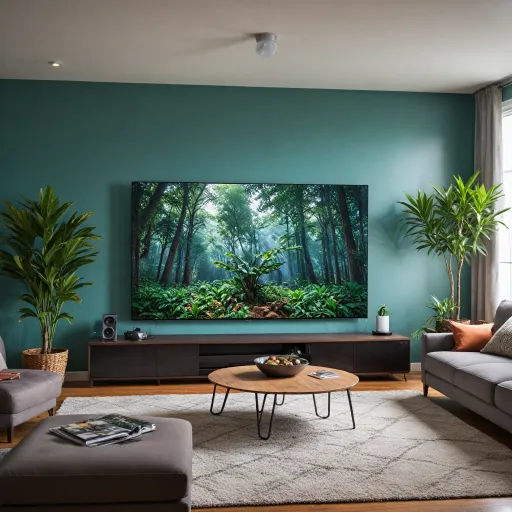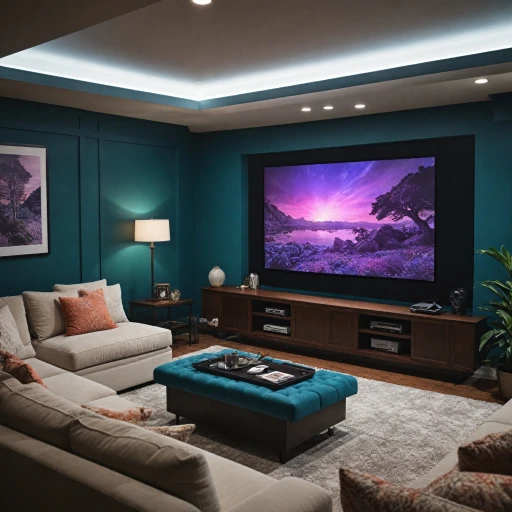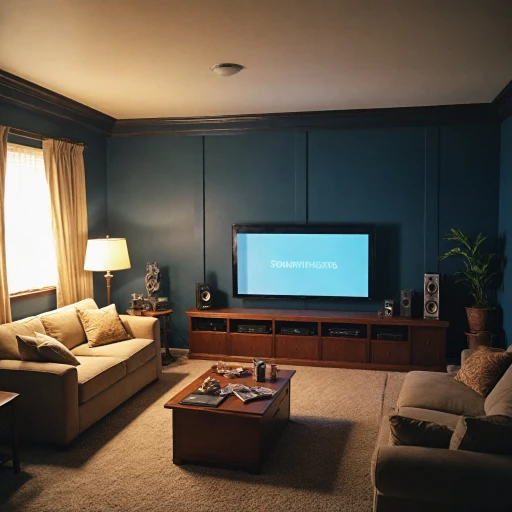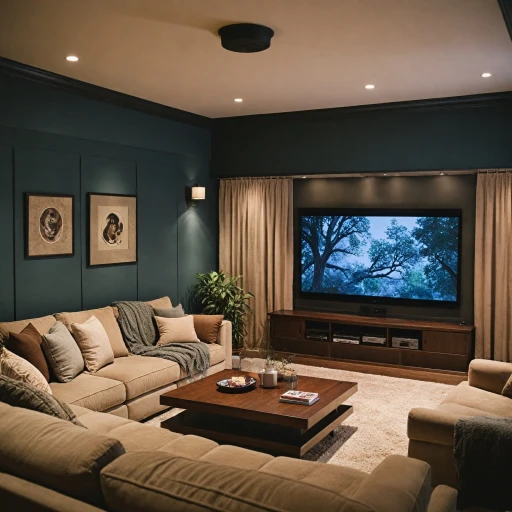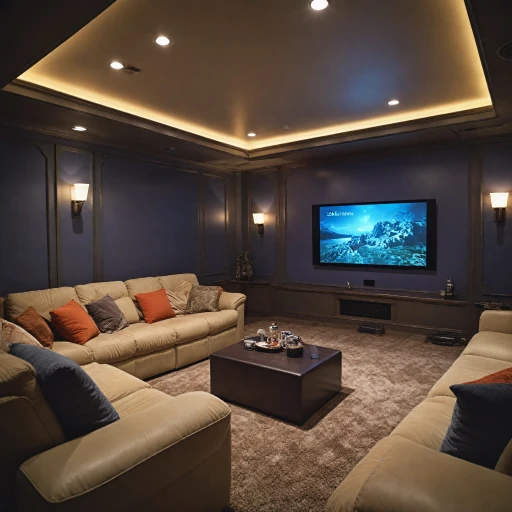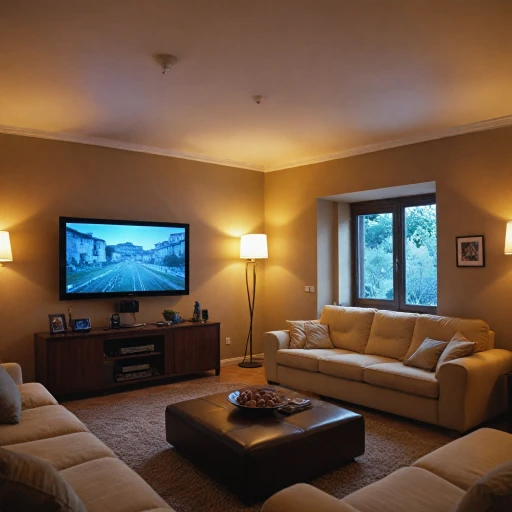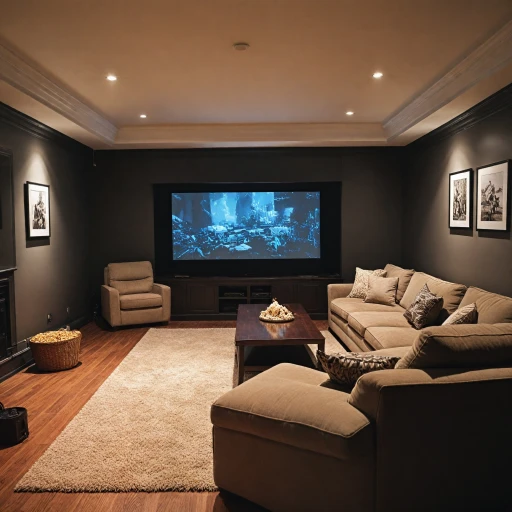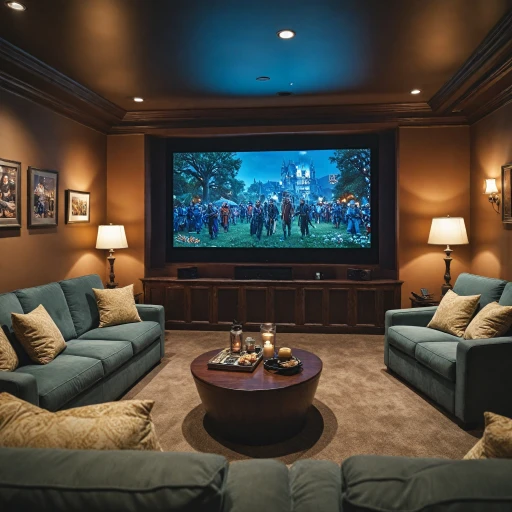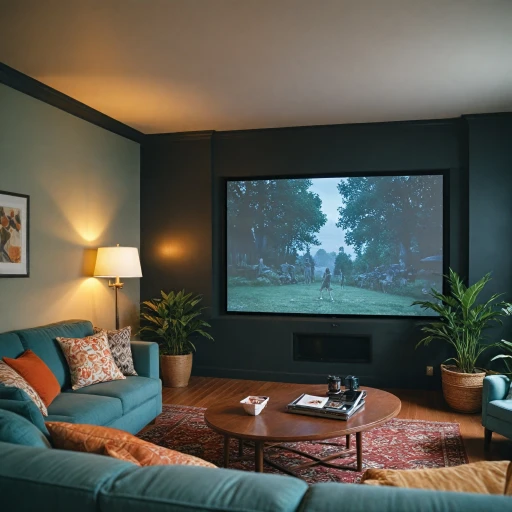
Understanding Pico Projectors
Unraveling the World of Miniature Projection
The landscape of home theaters has seen a significant transformation with the advent of pico projectors, an innovation bringing cinema-like experiences to compact spaces. These ultra-portable devices, also known as pocket projectors, are revered for their diminutive size and big capabilities. As the demand for convenient and versatile home theater solutions grows, pico projectors emerge as a leading contender, blending portability with impressive technological features.
Pico projectors, sometimes referred to as mini projectors, are designed to be compact and lightweight without compromising on performance. Despite their small footprint, they carry features that rival larger, traditional projectors, allowing users to enjoy vibrant visuals almost anywhere. Whether it's a bedroom, a small living room, or even an outdoor setting, these portable devices can effectively transform any space into a personal cinema.
Often equipped with HDMI ports and Bluetooth connectivity, these projectors support a variety of devices, ensuring seamless integration into your current setup. Some models, like the Kodak Luma series, offer smart functionalities, expanding their usability even further. This makes them not only a practical choice but also a futuristic one, catering to tech-savvy users who appreciate the versatility of a full smart and portable projector experience.
The pricing for pico projectors varies widely, depending on brand, features, and performance specifications. For instance, options like the Kodak Luma and the Luma Pico tend to receive high stars reviews for balancing price and performance effectively. They often come with LED technology and remote controls, enhancing user experience with features like easy navigation and bright, clear projections.
For those seeking a transportable theater setup that's easy on the budget, pico projectors might just be the key. Their lightweight design – available in sleek white, classic black, and even colorful finishes – ensures they can fit in almost any setting without cluttering your space. Additionally, many pico projectors come with built-in wifi and Bluetooth, offering a smart projector experience that can keep up with the latest streaming trends without the need for extra accessories.
Whether you're planning to elevate your home viewing or host an outdoor movie night, understanding the potential of these mini marvels can greatly enhance your setup. Dive deeper into the nitty-gritty of pico projection and discover how you can enhance your outdoor movie experience with these tiny powerhouses.
Advantages of Using Pico Projectors in Home Theaters
Why Pico Projectors Shine at Home
Using a pico projector in your home theater offers a host of benefits. These ultra portable devices have become increasingly popular due to their ability to transform any room into a mini cinema. Here are some reasons why they stand out:- Portability and Size: Compared to traditional projectors, pico projectors are remarkably compact. Their pocket-sized build allows you to easily move them from room to room or even take them outdoors. With models like the Luma portable and Kodak Luma, you can set up an impromptu movie night wherever you have a white projection surface.
- Connectivity Options: Most pico projectors come equipped with HDMI inputs and Bluetooth. This connectivity provides flexibility, allowing you to project content from various devices like smartphones and tablets. Managing a portable smart projector with a remote control enhances convenience.
- Ease of Use: Many pico projectors offer straightforward setup with user-friendly controls. The combination of a remote and LED brightness makes it easy to adjust settings for optimal viewing. Whether you're using a projector built for casual viewing or tweaking the settings of your smart projector, simplicity reigns supreme.
- Affordability: Price is a significant factor. Pico projectors generally offer a good value proposition, balancing cost with functionality. Whether you're eyeing a more affordable version or a full smart projector, reviews consistently highlight their cost-effectiveness.
- Flexibility: The ability to project on various surfaces, coupled with the mini projector's adaptability for different locations, adds to the versatility. Whether in black or white, these projectors adjust well to different ambient lighting conditions.
Key Features to Look for in a Pico Projector
Essential Features for Choosing the Right Projector
When diving into the world of pico projectors, a few critical features can significantly enhance your home theater experience. These ultra-portable devices pack a punch with advanced technologies, making them a favorite for movie enthusiasts and tech-savvy users alike. Here’s what you should consider when selecting a pico projector.
- Portability: One of the key attractions of pico projectors is their compact size. Whether you're looking at a pocket projector or a portable smart projector, ease of transportation and setup will be essential. Look for models like the Kodak Luma that are known for their portability.
- Connectivity Options: Modern pico projectors come with various connectivity solutions like HDMI, wifi, and Bluetooth, making them adaptable to different devices. Ensure your chosen projector is compatible with your existing tech setup, whether it be a smart projector with built-in apps or a simple HDMI cable connection.
- Resolution and Brightness: Look for a projector that offers crisp and clear image quality. While pico projectors are inherently smaller than traditional models, choosing a version with a high-resolution display and adequate brightness is critical for a satisfying viewing experience. The mini projectors often use LED technology which enables vibrant and vivid pictures.
- Sound and Remote Control: While the picture quality is crucial, sound can make or break your viewing experience. Some projectors offer built-in speakers, but for an immersive experience, see if the projector can connect to external speakers. Additionally, user-friendly controls, whether through a remote control or compatible app, will make operation straightforward.
- Additional Features and Price: Consider models that offer extra features such as a remote control, built-in apps, and various projection modes. Compare prices to find a model that offers excellent value for its features. Reading reviews and checking star ratings can provide insights into the practical performance of the projector.
To further enhance your viewing experience, make sure to choose a projector that matches your home theater needs and offers adjustability for different settings. This will help create a versatile setup that can easily adapt to different uses and environments.
Setting Up a Pico Projector for Optimal Viewing
Optimizing Your Pico Projector Setup
Setting up a pico projector for your home theater can be a straightforward process, but it requires attention to detail to ensure optimal viewing. Here’s a guide to help you get the most out of your portable projector experience.
Choosing the Right Location
First, consider the location where you plan to use your pico projector. The room should ideally be dimly lit to enhance the brightness and contrast of the projection. A white or light-colored wall can serve as a screen, but for the best results, investing in a dedicated projection screen is recommended.
Positioning and Distance
Positioning your pico projector at the correct distance from the screen is crucial. Most mini projectors, like the Kodak Luma, have a recommended throw distance, which is the distance between the projector and the screen. This distance affects the size and clarity of the image, so it’s important to follow the manufacturer’s guidelines.
Connecting Your Devices
Modern pico projectors often come equipped with multiple connectivity options, including HDMI, Bluetooth, and WiFi. Use an HDMI cable for the best video quality when connecting devices like laptops or streaming boxes. For a wireless setup, ensure your projector is compatible with Bluetooth or WiFi to connect with smart devices seamlessly.
Adjusting Image Settings
Once your projector is set up, take time to adjust the image settings. Most projectors, including portable smart projectors, offer settings for brightness, contrast, and color. Use the remote control to navigate these settings and fine-tune the image to your preference.
Sound Considerations
While some pico projectors have built-in speakers, they might not provide the best audio experience. Consider connecting external speakers or a soundbar via Bluetooth or an audio cable for enhanced sound quality.
Final Touches
Finally, ensure your projector is stable and secure. Use a tripod or a flat surface to prevent any movement during viewing. With these steps, you can enjoy a cinema-like experience in the comfort of your home.
Comparing Pico Projectors to Other Home Theater Options
Examining the Differences with Traditional Projectors
When delving into the realm of home theater options, it's essential to compare pico projectors with other traditional choices. While both serve the primary purpose of projecting video content, there are distinctive factors to consider when deciding which is most suitable for your needs.Portability vs. Power
- Pico Projectors: Known for their ultra-portable size, these devices are perfect for those who prioritize mobility. Whether you're switching rooms or taking it on the go, the compact size and lightweight nature of pico projectors, like the Kodak Luma or Luma Pico, make them convenient for various settings.
- Traditional Projectors: Although they generally offer more powerful projections and greater brightness, they can be cumbersome due to their larger build. These projectors are ideal for a fixed home-theater setup where portability isn't a priority.
Image Quality and Brightness
The choice between a pico projector and a standard projector can also hinge on image quality and brightness requirements.- Brightness: Traditional projectors generally provide greater brightness, crucial for larger rooms or spaces with ambient light. On the other hand, pico projectors might have lower lumens but are sufficient for darker environments where their led pico technology shines.
- Resolution: While some pico projectors now support higher resolutions, many traditional projectors still hold the upper hand in delivering full HD or even 4K quality due to their larger optical systems.
Technology and Features
- Smart Features: Many pico projectors come equipped with smart capabilities, including built-in WiFi and Bluetooth, allowing for wireless streaming from devices. This feature is a boon for tech-savvy users seeking a full smart experience.
- Connections: Most pico options, like the Kodak Luma, offer HDMI input, allowing connectivity with various media sources. While traditional projectors also support HDMI, they often require additional setup for smart capabilities.
Price Considerations
Budget plays a crucial role in choosing the right projection device.- Pico Projectors: Generally, these are priced more affordably due to their simplicity and focus on portability. Whether you choose a mini projector or luma portable device, they offer value without a hefty price tag.
- Traditional Projectors: Though often more expensive, the investment might be justified for a dedicated home theater due to superior performance characteristics.
Top Pico Projectors on the Market
Leading Pico Projectors for an Immersive Home Theater Experience
When considering pico projectors for your home theater, there are several standout models on the market that combine portability, quality, and ease of use. Here's a look at some of the top options that have garnered positive reviews and earned high marks for performance:- Kodak Luma Series: The Kodak Luma portable smart projector is known for its compact size and impressive projection quality. This pocket projector boasts features like an HDMI port, wireless connectivity (WiFi and Bluetooth), and user-friendly interface. Its sleek design and compatibility with numerous devices make it a popular choice for those seeking a mini setup.
- LG CineBeam: With its standout color accuracy and robust features, the LG CineBeam offers ultra portable solutions which include LED technology for vibrant images. It supports HDR content and often comes in both white and black models, delivering a variety of aesthetic choices to match your home.
- Anker Nebula Capsule: This mini projector combines functionality and compactness with a cylindrical design, perfect for projection on any wall. Featuring a smart interface and remote control options, users commend its high-quality build and ease of setup, making it a favorite among reviews.
- ViewSonic M1 Mini Plus: Known for its portability and built-in speakers, this projector fits easily into your bag, making entertainment truly on-the-go. It supports both HDMI and USB connections and includes a convenient LED pico projector light for ease of use in darker settings.
- Artlii Pocket Projector: A more budget-friendly option, this projector doesn't skimp on functionality. With good projection size and remote control capabilities, it effectively caters to users who need a reliable yet affordable pico option.
